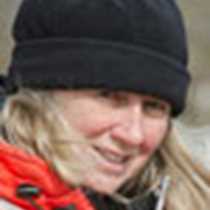Wales
Bathed in Celtic mist, green hillsides rolled away from the highway, their uniformity broken by dry stone walls that were masked themselves by turf and shrubby hawthorn or hazel trees. Young lambs frolicked, nudging their mothers for nourishment or butting their siblings in play. Rocky outcroppings hosted golden flowered gorse on their resistant ridges. In valleys sodden soil accommodated rushes and sedges around the edges of mirror-like ponds. Leaving the Isle of Anglesey, the road continued along the coast squeezed between granitic crags and pink sandy beaches exposed by the fallen tide.
Still wrapped in its protective rocky rampart walls, Conwy came to life this busy weekday morn. The dress was of the present but manifestations of the past dominated this coastal site. Like sentries of bygone centuries we walked the parapet’s paths, pausing to scan the distant hills or gardens just below. Imposing, after eight hundred years and more, Conwy Castle stood impenetrable. If so desired, even now the town could close its gates imposing curfews on all but those residing inside at the invitation of royalty. Edward I planned well in constructing a ring of English forts and walled towns encompassing conquered Wales. Many still stand today.
Showers flirted with sunshine as fragments of blue pushed aside gray skies. Forest green, gray-green, emerald green, jade, lime-colored, olive or chartreuse, they were all there, the background for a riotous display of floral forms and shades. Bodnant Gardens glistened with miniscule aquatic jewels resting on cup-like leaves or gathered in perianth pockets. The sweet perfume of laburnum dripped from its famous arbor as did the golden racemes of papilionaceous flowers. Italianate terraces lead to reflective pools where velvet pads floated with pink or white lily blossoms. Massive trees stretched from the riverside where walkways meandered between azalea or rhododendron shrubs.
Waterfalls cascaded from sharp craggy peaks of the Snowdonia Range. Coarse talus tumbled towards the valley floor where it hadn’t been tamed into dry stone walls defining summer and winter pasture or one neighbor’s land from another. Bursting from the confines of this ancient slaty rock, the land opened up again broken only by lakes or glacially rounded hillocks. Our route had taken us full circle back to the coast to Caernarvon, the fortress that faces Anglesey. From Roman times, it had been known as this but that encampment had been long gone when Edward I constructed his castle. From here he governed north Wales and here the first English Prince of Wales was born.
White-caps danced upon the waves as we returned to the Endeavour. But the sky was blue, possibly a good omen for tomorrow.
Bathed in Celtic mist, green hillsides rolled away from the highway, their uniformity broken by dry stone walls that were masked themselves by turf and shrubby hawthorn or hazel trees. Young lambs frolicked, nudging their mothers for nourishment or butting their siblings in play. Rocky outcroppings hosted golden flowered gorse on their resistant ridges. In valleys sodden soil accommodated rushes and sedges around the edges of mirror-like ponds. Leaving the Isle of Anglesey, the road continued along the coast squeezed between granitic crags and pink sandy beaches exposed by the fallen tide.
Still wrapped in its protective rocky rampart walls, Conwy came to life this busy weekday morn. The dress was of the present but manifestations of the past dominated this coastal site. Like sentries of bygone centuries we walked the parapet’s paths, pausing to scan the distant hills or gardens just below. Imposing, after eight hundred years and more, Conwy Castle stood impenetrable. If so desired, even now the town could close its gates imposing curfews on all but those residing inside at the invitation of royalty. Edward I planned well in constructing a ring of English forts and walled towns encompassing conquered Wales. Many still stand today.
Showers flirted with sunshine as fragments of blue pushed aside gray skies. Forest green, gray-green, emerald green, jade, lime-colored, olive or chartreuse, they were all there, the background for a riotous display of floral forms and shades. Bodnant Gardens glistened with miniscule aquatic jewels resting on cup-like leaves or gathered in perianth pockets. The sweet perfume of laburnum dripped from its famous arbor as did the golden racemes of papilionaceous flowers. Italianate terraces lead to reflective pools where velvet pads floated with pink or white lily blossoms. Massive trees stretched from the riverside where walkways meandered between azalea or rhododendron shrubs.
Waterfalls cascaded from sharp craggy peaks of the Snowdonia Range. Coarse talus tumbled towards the valley floor where it hadn’t been tamed into dry stone walls defining summer and winter pasture or one neighbor’s land from another. Bursting from the confines of this ancient slaty rock, the land opened up again broken only by lakes or glacially rounded hillocks. Our route had taken us full circle back to the coast to Caernarvon, the fortress that faces Anglesey. From Roman times, it had been known as this but that encampment had been long gone when Edward I constructed his castle. From here he governed north Wales and here the first English Prince of Wales was born.
White-caps danced upon the waves as we returned to the Endeavour. But the sky was blue, possibly a good omen for tomorrow.



